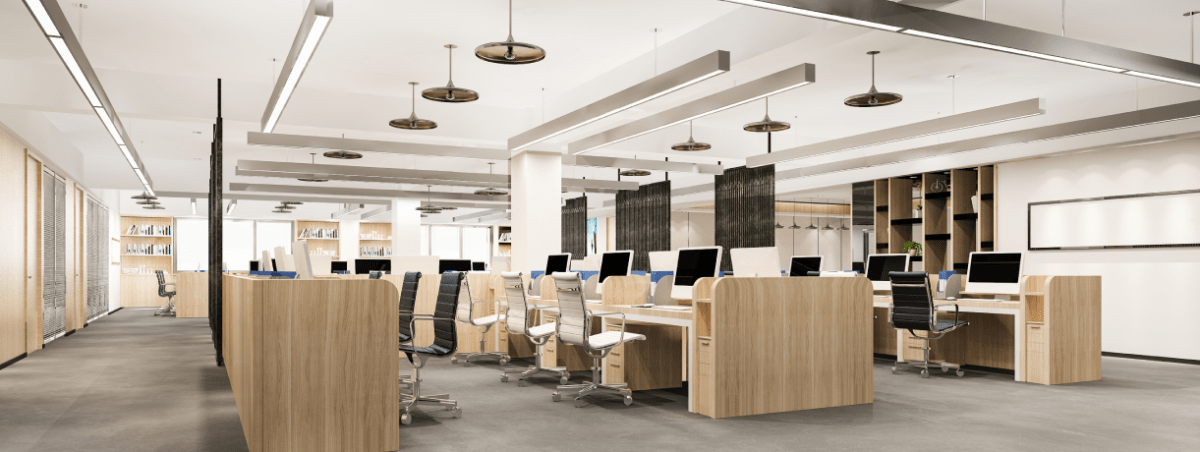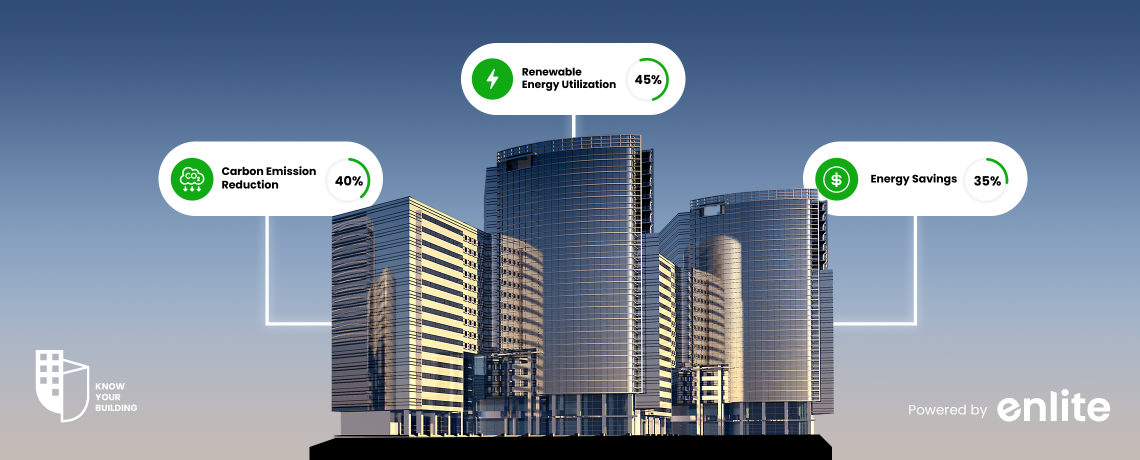Introduction
In the last two decades, there have been several changes to the corporate environment. Even though office trends come and go, the impact that the workplace has on employee health and welfare never goes away. To function at their best and to enhance productivity, employees need to feel relaxed and at ease in their physical work environments. In fact, the heart and soul of any organisation is productivity.
The productivity of your staff can be highly influenced by the layout and atmosphere of your office. In addition, factors such as the placement of furniture, ease of movement between spaces, and overall atmosphere all play a role. Fortunately, there are technologies available to increase productivity in your company and create an environment where employees desire to work. For ideas and recommendations on how to do it, keep reading. In this blog, we’ll go into more detail about how effective comfort management in offices can increase productivity.
Why is Comfort Management important in office spaces?
Comfort management in office spaces refers to the management of physical, environmental, and psychological factors that contribute to the overall comfort and well-being of employees in the workplace. It involves creating and maintaining a work environment that supports employee health, productivity, and satisfaction. This includes the management of factors such as temperature, air quality, lighting, ergonomics, acoustics, and workplace design.
In addition, comfort management also involves addressing psychological factors such as work-life balance, job satisfaction, and employee engagement. By creating a comfortable and supportive work environment, organisations can improve employee morale, reduce absenteeism, and increase overall productivity. Effective comfort management can also help to attract and retain top talent, as employees are more likely to remain in a workplace that supports their well-being.
That being said, most of the corporate employees will spend a significant amount of their time at desks or other workplaces. Exploring the evolving comfortability of the workplace has never been more intriguing as we head towards a world with more activity-based employment. The notion that “happy workers are more productive workers” is receiving more significant attention, and this is leading to a growing body of evidence that people who are happy at work are more valuable to their employers.
It is also evident that workplace happiness has a favourable impact on employee engagement, retention, productivity, and overall satisfaction. But what exactly motivates employees to work productively? There are, of course, the obvious factors, such as the variety of tasks and responsibilities of the job, the compensation package that comes with it, and the recognition from coworkers and superiors. However, it’s crucial to consider the real setting in which the work is performed.
In a recent piece on this topic, The Economist drew attention to studies that examine how physical office surroundings influence workers’ productivity. The quality of the water, the temperature, the absence of noise, the presence of plants, and access to windows all seem to have an impact on how happy an employee is at work. The design of the office space appears to be another important factor that influences how employees behave in the workplace.
Given that office spaces are growing in popularity in the professional world of today, it is crucial to consider serviced offices while making decisions on workplace happiness. In the foreseeable future, we anticipate serviced offices to grow even more in popularity until they account for about 40% of annual office take-up. That’s because they assist in meeting the growing demand for flexibility as more and more (post-)millennials enter the workforce. You will also require 3-, 4-, and 5-star serviced workplaces, exactly like in typical office spaces.
Factors that impact Work Productivity
It has been demonstrated that a few certain factors require some extra consideration when building a workspace, even though the aesthetics and environment of the business as a whole do have an impact on your employees. The physical environment, including temperature, lighting, air quality, ergonomics, acoustics, and workplace design, plays a crucial role in employee comfort and well-being. By controlling these factors, organisations can ensure that employees have a comfortable work environment that supports their productivity and well-being. Some of the factors are:
- Artificial and natural lights: This may be one of the most important elements that impact productivity in a positive or negative way. Employees are impacted both physically and mentally by bright but soft light. It lessens the possibility of computer vision syndrome while also making people happier and less worried.
- Comfort: Both workplace furniture and thermal comfort are addressed here. Your staff will be able to concentrate on their work rather than attempting to make themselves comfortable, thanks to appropriate temperature levels and ergonomically sound furnishings.
- Air adequacy: Good air quality in office spaces can greatly impact comfort levels and thus boost productivity. By ensuring good air quality and temperature control, office spaces can create a more comfortable and productive environment for their employees.
- Nature: Nature can provide comfort management in office spaces by introducing elements such as plants, natural light, and outdoor views, which can help reduce stress, increase positivity, and improve the overall well-being of employees.
How does an effective BMS offer good comfort management to increase workplace productivity?
Successful companies understand that employee productivity is influenced by factors beyond just salary or strict work hours. The most productive workers are often the ones who are content and satisfied with their jobs. Since people spend a significant portion of their lives at work, it’s essential for the working environment to be positive and impactful on well-being. Studies show that customised and well-managed office spaces can provide numerous benefits over traditional setups. A pleasant and supportive work environment can enhance employee well-being, which then leads to increased productivity.
In fact, people flourish in managed office spaces because they provide them with additional opportunities for networking and cross-sector interaction, as well as areas for leisure and recreation. Employees experience less tension and exhaustion when they have the opportunity to take a quick rest or simply get some time away from the work area. Such an office gives them a place to rest during the day, so they can come back to their stations re-energized and at ease.
In addition, the development of more advanced connected gadgets fuels the expansion of building management systems and the Internet of Things (IoT). Technology has the ability to impact every area of modern life, increasing productivity and efficiency across all industries, including corporate office spaces. IoT is often described as a network of objects that can exchange data and communicate with one another to send, receive, and evaluate it. Some projections have stated that by 2030, more than half of all new companies will be IoT-based, increasing their automation and resulting in cost savings of millions through higher productivity. The big question now is how smart comfort management technologies like IoT can help a company work smarter, given the huge potential this technology has for boosting business productivity. Here are the top 3 ways smart technologies used in building management systems provide excellent comfort management to increase business productivity.
Air Quality Management
The quality of the air is one of the most crucial aspects to take into account while renovating offices for better comfort. Since it can significantly affect employee well-being and productivity, indoor air quality (IAQ) has received more attention in recent years. Numerous issues, including headaches, nausea, dizziness, and respiratory issues, can be brought on by poor IAQ. It has also been connected to a decline in productivity and cognitive performance. IAQ may be impacted by a multitude of circumstances. Meeting rooms, which are frequently crowded with people and contain high levels of carbon dioxide, as a result, are where the issue of poor air quality is most acute.
IAQ can be improved with the use of the IoT base sensors, which can be used to monitor these elements and offer data. Office sensors, for instance, can be used to detect parameters like temperature, moisture, and CO2 levels that are above normal so the comfort management system can make the appropriate adjustments. Automated ventilation systems can also be utilised to deliver clean air and eliminate airborne contaminants. You may significantly improve the working environment for employees by taking IAQ into account when remodelling office spaces.
Optimised HVAC Systems
Last but not least, the HVAC system in office spaces contributes significantly to delivering individualised comfort and can thus gain a lot from IoT. The 3-30-300 rule states that $300 of a company’s expenses go toward salaries as opposed to $3 going toward utilities, and $30 on rent. It is simple to understand why comfortable cooling and heating should be so vital to building owners, given how much is invested in people. The correct environments and temperatures can make a huge impact on a company’s success or failure. Better customer satisfaction, greater productivity, and higher revenue are the results of more comfortable occupants in office buildings.
Despite how crucial comfort is, there is currently no actual accurate way to measure it. So how can you determine everyone’s degree of comfort without continuously asking? IoT holds the answer. The Internet of Things (IoT) offers a real-time response to the query, “Are the building inhabitants comfortable?” For example, a technology-based platform can facilitate input regarding the building’s quality, including preferred rooms and the reasons for them. Real-time understanding of each space’s temperatures, humidity, airflow, and occupancy levels can be achieved with the aid of sensors. In addition, heat map technology can detect human activity so that building systems can respond and automatically alter temperatures based on occupant comfort.
Lighting Management
Lighting management is an essential aspect of building management and can have a significant impact on both employee comfort and productivity. An effective BMS can automate and optimise lighting control to improve visual comfort, reduce energy waste, and promote productivity. One important aspect of lighting management is the adjustment of light levels in response to natural light conditions. This is known as “daylight harvesting,” and it involves the automatic adjustment of artificial lighting in response to changes in sunlight.
For instance, the BMS can monitor the level of natural light in a room and adjust the intensity of artificial lighting accordingly, reducing energy waste and improving visual comfort for employees. This is especially important in large open-plan offices where natural light is abundant, as it can help to minimise the amount of energy used for lighting. Therefore, a well-designed BMS can effectively manage indoor air quality, HVAC, and lighting to create a comfortable and productive work environment. By monitoring environmental conditions and responding with appropriate adjustments, a BMS can support employee health and well-being while reducing energy waste and promoting productivity.














